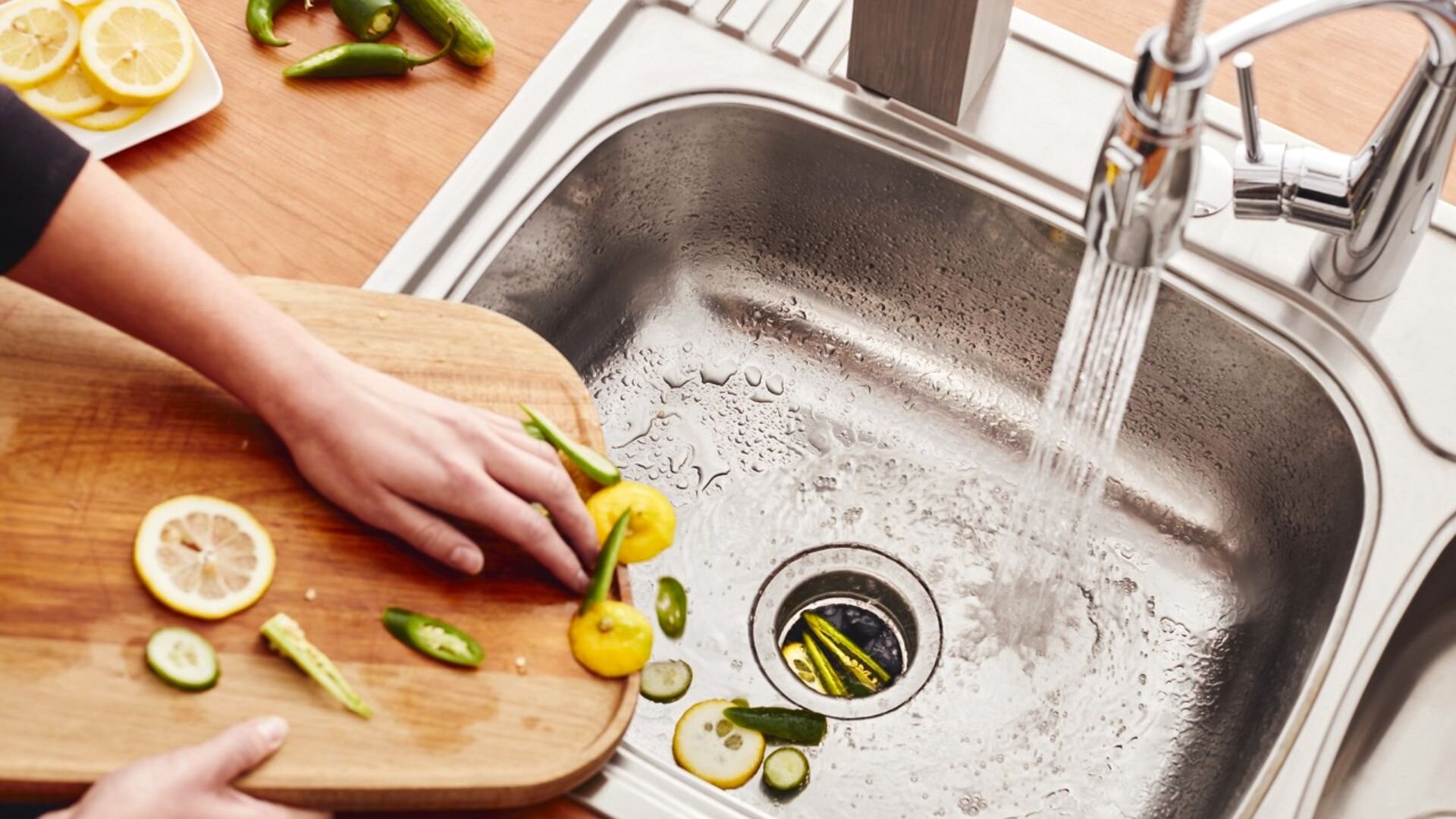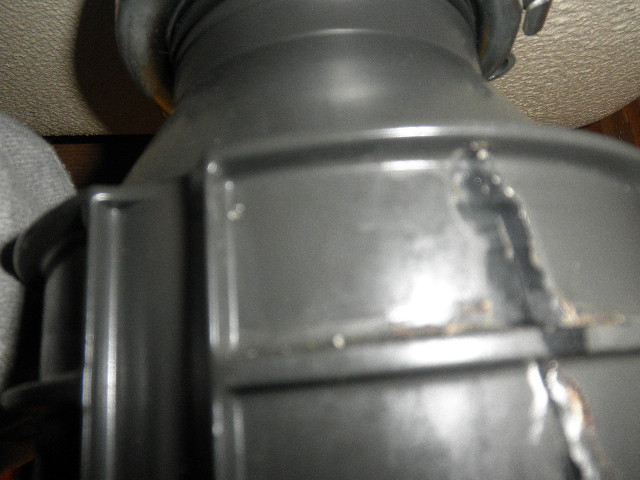Were you looking for help around Why Is My Garbage Disposal Leaking From the Bottom??

Garbage disposals are necessary kitchen appliances that aid in dealing with food waste effectively. Nonetheless, a leaking waste disposal unit can be a frustrating and untidy trouble to manage. Fortunately, lots of leaks can be taken care of easily with a couple of simple steps. In this article, we will go over how to deal with a dripping waste disposal unit properly.
Introduction
Waste disposal unit are installed under cooking area sinks and are developed to shred food waste right into smaller pieces, permitting it to travel through the plumbing system conveniently. While these devices are normally trustworthy, leaks can happen with time as a result of wear and tear, loose links, or damages to the unit.
Step-by-Step Overview to Repairing a Dripping Waste Disposal Unit
Turn Off the Power
Before attempting any kind of fixings, guarantee that the power to the waste disposal unit system is shut off to stop the danger of electrical shock.
Find the Leak
Identify the precise location of the leak and figure out the cause
Tighten up Connections
Use a wrench to tighten any kind of loose links in between the disposal unit and the pipes system.
Replace Seals or Gaskets
If the leak results from worn seals or gaskets, eliminate the old components and replace them with new ones.
Patching Splits or Openings
For cracks or openings in the disposal device, use epoxy or an ideal patching product to secure the damaged area.
Identifying the Resource of the Leakage
Before trying to repair a dripping garbage disposal, it is essential to determine the resource of the leak. This can normally be done through aesthetic inspection or by conducting basic examinations.
Visual Evaluation
Examine the waste disposal unit unit thoroughly for any kind of indicators of water leakage. Pay very close attention to locations around seals, gaskets, and link points.
Evaluating for Leakages
One means to test for leaks is by running water via the disposal unit and looking for any kind of visible indicators of leak.
Usual Root Causes Of Leakages in Trash Disposals
Worn Seals and Gaskets
Seals and gaskets play a crucial function in avoiding water from dripping out of the garbage disposal. Over time, these components can wear away, resulting in leaks around the disposal device.
Loose Connections
The connections in between the garbage disposal and the plumbing system can come to be loose in time, creating water to leakage out during operation.
Splits or Openings in the Disposal Device
Physical damage to the waste disposal unit, such as splits or openings in the housing, can additionally result in leaks.
Devices and Products Needed for Dealing With a Leaking Garbage Disposal
Before beginning the repair service procedure, collect the essential tools and products, including a screwdriver, flexible wrench, plumbing professional's putty, replacement seals or gaskets, and epoxy or patching material for fixing splits or openings.
Examining the Garbage Disposal After Repair
As soon as the fixing is full, test the garbage disposal by running water via it to make certain that the leakage has been resolved.
Preventive Upkeep Tips to Stay Clear Of Future Leakages
To avoid future leakages, it is important to execute routine maintenance on your garbage disposal. This consists of keeping it clean, avoiding putting non-food things or difficult items down the disposal, and periodically checking for leakages or other issues.
Final thought
To conclude, dealing with a dripping waste disposal unit is a reasonably uncomplicated procedure that can be finished with fundamental tools and products. By adhering to the actions described in this article and practicing preventive maintenance, you can keep your garbage disposal in good working condition and prevent expensive repair work in the future.
HOW TO REPAIR A LEAKING GARBAGE DISPOSAL
The first thing to do if your garbage disposal starts to leak or exhibits other symptoms of wear and tear is to inspect the appliance quickly. Before making any repairs, check for any obvious cracks or damaged parts and turn the disposal off at the power source. Once you have located the issue, several tools might assist you in solving it. Many resources are available to assist you in putting your disposal back in working order, whether by purchasing new parts or professional assistance from a repair technician. So immediately act if you need help with leaky garbage disposal. You can rapidly resolve the problem and enjoy smoothly functioning appliances with thorough troubleshooting and help from web resources.
Food waste is disposed of using a garbage disposal system, which grinds and flushes it down the toilet. A garbage disposal is a motorized device with one or more rotating blades that grinds up food waste into little bits. They are commonly found under the kitchen sink. A dishwasher inlet or connector is often built into garbage disposals, allowing extra water to drain into the sink’s dishwasher. Several things, such as clogs, worn-out components, or damage to the inside walls of the unit, can bring on garbage disposal leaks or other problems.
WHAT ARE SOME COMMON PROBLEMS WITH GARBAGE DISPOSALS?
Jamming: One of the most frequent issues with garbage disposals is jamming. It occurs when hard or fibrous materials, such as bones, potato peels, or fruit pits, get stuck in the disposal’s blades or impeller. It can prevent the unit from operating correctly or cause it to make unusual noises. Clogging: If too much food waste or non-food items are put into the disposal at once, it can lead to clogging. Clogged disposal may result in slow drainage or a complete backup of water in the sink. Grease and fats can also solidify inside the disposal and contribute to clogging. Leaks: Garbage disposals can develop leaks over time. The most common areas for leaks are the sink flange, the discharge pipe connections, or the dishwasher connection. Leaks can cause water damage and need to be addressed promptly. Foul odors: Food residue can build up in disposal over time and cause unpleasant odors. Bacteria and mold growth inside the unit can also contribute to foul smells. Dull blades: The grinding blades in the disposal can become dull over time, resulting in inefficient chopping and grinding of food waste. That may lead to more frequent jams and increased strain on the motor. HOW CAN YOU TELL IF YOUR GARBAGE DISPOSAL IS LEAKING?
Visible water: Check underneath the sink where the garbage disposal is installed. If you notice water pooling or dripping around the unit or any adjacent pipes, it’s a clear sign of a leak. Musty odor: A persistent or moldy smell from your kitchen sink area could indicate a hidden leak. The moisture from a leaking garbage disposal can create a damp environment that promotes mold and mildew growth. Water damage: Examine the area surrounding the garbage disposal for any signs of water damage. Look for water stains, discoloration, or warping on the cabinet floor or walls beneath the sink. Decreased performance: A leak in the garbage disposal can affect its functionality. If you notice that the disposal is not grinding food waste properly or is making unusual noises, it could be due to water damage or a leak compromising its mechanisms. Rust or corrosion: Inspect the garbage disposal for any signs of rust or corrosion. A leaking unit can cause metal components to deteriorate over time. Look for rust-colored stains or deterioration on the disposal unit or surrounding pipes. https://theappliancepeople.com/how-to-repair-a-leaking-garbage-disposal/

I have been very fascinated with Tips on Fixing a Leaking Garbage Disposal and I really hope you liked our blog post. So long as you enjoyed reading our post if you please make sure you remember to share it. I praise you for your time. Please come visit our site back soon.
Click Here